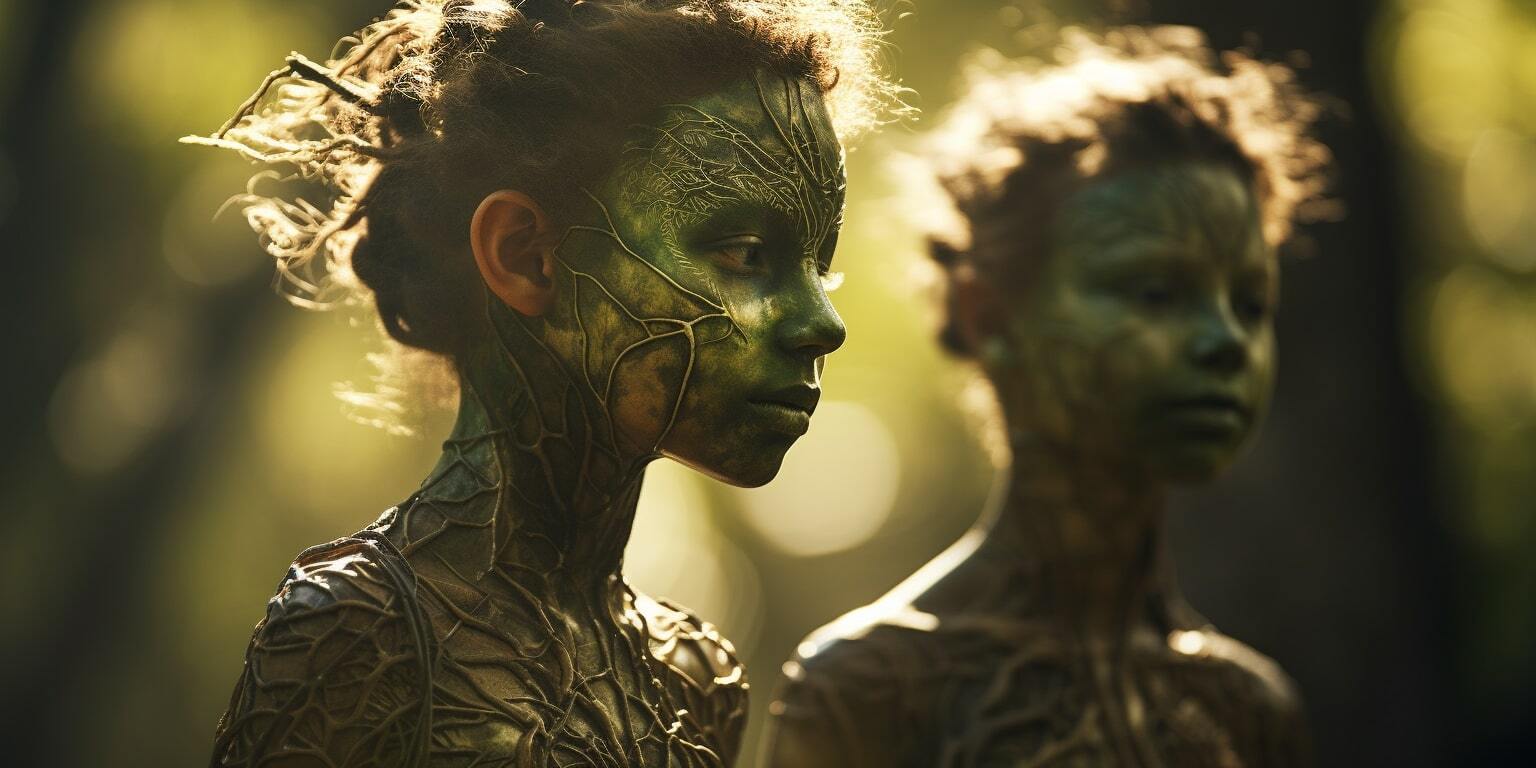
Imagine stumbling upon two children with green skin speaking an unknown language. This isn't a fairy tale but a real story from the village of Woolpit in England. The Green Children of Woolpit have puzzled historians and storytellers for centuries. Who were they? Where did they come from? Why was their skin green? These questions have sparked countless theories, from folklore to scientific explanations. In this blog post, we'll dive into 30 intriguing facts about these mysterious children. Get ready to explore the legends, the possible truths, and the enduring mystery of the Green Children of Woolpit.
The Mysterious Arrival
The Green Children of Woolpit is a fascinating medieval legend that has intrigued many for centuries. Let's dive into some intriguing facts about this mysterious tale.
-
The Story Originated in the 12th Century
The legend dates back to the 12th century in the village of Woolpit, Suffolk, England. Two children with green skin were found near a wolf pit, which gave the village its name. -
Discovered by Reapers
The children were discovered by reapers working in the fields. They were bewildered by the children's unusual appearance and strange clothing. -
Unfamiliar Language
The children spoke an unknown language that no one in the village could understand. This added to the mystery surrounding their origins. -
Green Skin
Their most striking feature was their green skin, which set them apart from the local population. This peculiar characteristic led to various theories about their origins. -
Refusal to Eat
Initially, the children refused to eat any food offered to them. They seemed unfamiliar with the local diet and only consumed raw beans.
Integration into Society
As time passed, the children began to adapt to their new environment. Here are some facts about their integration into Woolpit society.
-
Gradual Diet Change
Eventually, the children started eating other foods and their green skin gradually faded. This change suggested that their diet might have been responsible for their unusual skin color. -
Baptism
The children were baptized and given names. The boy was named Richard, while the girl's name has been lost to history. -
The Boy's Death
Sadly, the boy did not survive long after their discovery. He died shortly after being baptized. -
The Girl's Survival
The girl, however, survived and integrated into society. She learned to speak English and adapted to the local customs. -
Marriage
The girl eventually married a man from King's Lynn, Norfolk. Her descendants are believed to have lived in the area for generations.
Theories and Explanations
The legend of the Green Children has sparked numerous theories and explanations over the years. Here are some of the most popular ones.
-
Flemish Immigrants
One theory suggests that the children were Flemish immigrants who had fled persecution. Their green skin might have been due to malnutrition. -
Chlorosis
Another theory is that the children suffered from chlorosis, a condition caused by iron deficiency that can give the skin a greenish tint. -
Fairy Tale
Some believe the story is a fairy tale or allegory, representing the integration of outsiders into a community. -
Parallel Universe
A more fantastical theory posits that the children came from a parallel universe or another dimension. -
St. Martin's Land
The children claimed to come from a place called St. Martin's Land, where everything was green. This has led to various interpretations, including a subterranean world.
Historical Accounts
The story of the Green Children has been documented by several historical sources. Here are some key facts about these accounts.
-
William of Newburgh
The first written account of the Green Children comes from William of Newburgh, a 12th-century English historian. -
Ralph of Coggeshall
Another early account was written by Ralph of Coggeshall, an abbot who included the story in his chronicles. -
Variations in Accounts
There are slight variations in the details of the story between different historical accounts, adding to the mystery. -
Medieval Chronicles
The story has been included in various medieval chronicles and has been retold in different forms over the centuries. -
Modern Retellings
The legend continues to be retold in modern times, inspiring books, articles, and even plays.
Cultural Impact
The legend of the Green Children has had a lasting impact on culture and folklore. Here are some ways it has influenced various aspects of society.
-
Folklore Studies
The story is often studied in the context of folklore and medieval legends, providing insights into the beliefs and customs of the time. -
Literature
The Green Children have inspired numerous works of literature, including novels and short stories. -
Art
Artists have depicted the Green Children in various forms, from paintings to illustrations. -
Music
The legend has even inspired musical compositions, reflecting its enduring appeal. -
Tourism
Woolpit has become a point of interest for tourists and folklore enthusiasts, drawn by the mystery of the Green Children.
Scientific Investigations
In recent years, the story has also attracted scientific interest. Here are some facts about the scientific investigations into the legend.
-
Genetic Studies
Some researchers have proposed genetic studies to determine if there is any basis for the children's green skin. -
Nutritional Analysis
Nutritional experts have examined the possibility that the children's diet caused their green skin. -
Historical Context
Historians have studied the social and political context of the time to better understand the circumstances surrounding the legend. -
Medical Explanations
Medical professionals have explored various conditions that could explain the children's green skin and other symptoms. -
Interdisciplinary Research
The legend has sparked interdisciplinary research, combining history, folklore, medicine, and science to unravel the mystery of the Green Children of Woolpit.
Final Thoughts on the Green Children of Woolpit
The Green Children of Woolpit remain one of history's most intriguing mysteries. Their story, filled with elements of folklore and speculation, continues to captivate imaginations. Whether they were lost children from a nearby village, visitors from another world, or simply a tale spun from medieval superstition, their legacy endures. This legend reminds us of the power of storytelling and the human desire to explain the unexplainable. As we ponder the origins of these green-skinned children, we also reflect on the rich tapestry of history and myth that shapes our understanding of the past. So, next time you hear a strange tale, remember the Green Children of Woolpit and the enduring mystery they represent.
Was this page helpful?
Our commitment to delivering trustworthy and engaging content is at the heart of what we do. Each fact on our site is contributed by real users like you, bringing a wealth of diverse insights and information. To ensure the highest standards of accuracy and reliability, our dedicated editors meticulously review each submission. This process guarantees that the facts we share are not only fascinating but also credible. Trust in our commitment to quality and authenticity as you explore and learn with us.


